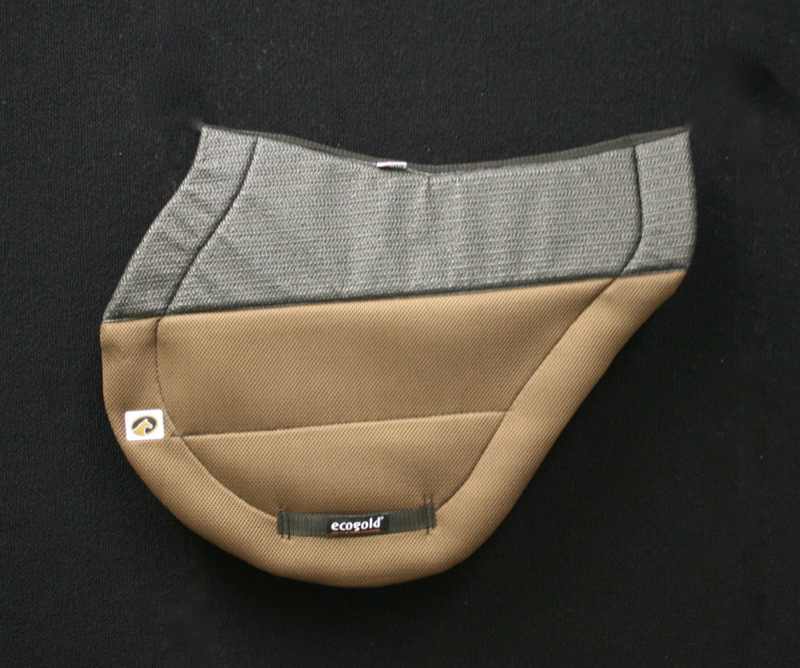ECOGOLD founder and textile engineer John Da Silva, was featured on the Horse Radio Network. He explained how you can control and reduce the temperature of your horse:
“As with human athletes when horses exercise, their muscles develop heat. Like a car’s engine, after the initial warm-up, the heat generated needs to be dissipated. The natural way in which the body controls overheating is by producing sweat. When the sweat evaporates, it cools the muscles down, reducing the temperature to the appropriate level.
So it’s very important, not to interfere with the horse’s natural cooling process by using saddle pads or horse boots made with materials that allow the maximum evaporation.
Basically, you have to check 3 things.
#1. BREATHABILITY
Here’s an easy test that we always use to find if a product is breathable.
Put it against your mouth and blow. If the air flows easily through the material and you can feel it on the other side on your hand, it’s really breathable. If you can’t, it’s not breathable at all (as is the case of most waterproof materials such as neoprene), or it might be a “little” breathable under pressure or special conditions different from the natural way horse’s sweat evaporates.
#2. INSULATION
Does the saddle pad or horse boots trap in heat? You should use materials that are not temperature insulators because you want to dissipate the heat as quickly as possible.
As a general rule, if it keeps you warm in winter, don’t use it on your horse when competing in hot weather.
It is a matter of fact, one of the aspects of the equestrian sport that initially most called my attention, was the use of wool and sheepskin on saddle pads and horse boots. You just have to look at human athletes… no one runs a marathon dressed in a sheepskin suit!
#3. EVAPORATION CAPACITY
You have also to consider: how quickly does the sweat evaporate?
Water in a plate evaporates much faster than in a glass. Why? Because the evaporation capacity is proportional to the size of the surface. So you should always look at the shape of the fabric. A material with a waffle or honeycomb surface will cool your horse much faster than a flat one. The hills and valleys in the fabric increase the evaporation surface.
So, always look at those 3 factors to keep your horse (as any other athlete!) cool and comfortable, and help him achieve an optimal performance.”

